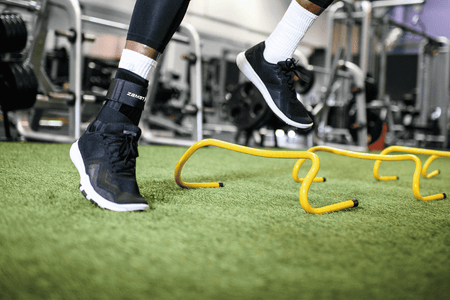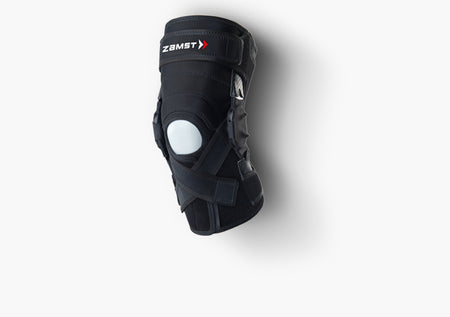
What is a thumb sprain?
Thumb sprains can affect an individual’s ability to grip objects and potentially limit their occupation or sporting activity. A thumb sprain is an injury the ligaments surrounding the thumb joint, typically resulting from a sudden forceful motion, such as bending the thumb backwards or sideways. This can occur in activities like sports, falls, or accidents. Symptoms often include pain, swelling, bruising and difficulty moving the thumb. When someone has a thumb sprain it is important to protect the thumb by a thumb guard, or some sort of thumb stabilizer such as a splint to reduce the movement of the thumb during the beginning phases.
Risk factors for a thumb sprain can include:
1. Previous history of thumb injury: Biggest predictor of an injury is past injury. This can weaken the thumb ligaments and also create a laxity which will stretch the thumb further
2. Sports: Participating in sports puts the body at risk for injury than having a sedentary lifestyle. Sports like skiing, basketball, and volleyball involve frequent thumb use or potential for falls
3. Age: Children and older adults have weaker ligaments and bones making them more susceptible

Why does this happen?
A thumb sprain can occur when the ligaments supporting the thumb joint are overstretched or torn due to sudden, forceful movements. Sports is a common place for this to happen because of the variability and unpredictability of actions in the sport. Actions such as falls, ball hitting the thumb, direct impact to the thumb can push the thumb beyond its normal range of motion, stressing the ligaments. Ligaments are elastic tissues that connect bones and stabilize joints, but excessive force can cause damage.
Sports such as football, basketball, skiing and gymnastics can expose the thumb to great risk because of the contact in the sport. Sometimes proactive approaches such as thumb stabilizers and thumb support such as tape can help reduce risk of a thumb sprain especially if you have a history of a thumb injury.

What are the symptoms?
Thumb sprains usually present in similar ways no matter the sport or injury mechanism. The main symptoms of a thumb sprain include:
1. Pain and tenderness: This can be sharp or throbbing pain in the thumb, usually at the base which can feel worse with movements.
2. Swelling: Right after injury there is usually swelling at the base of the thumb which can last up to 21 days
3. Instability: In more severe cases the thumb will feel unstable and not feel normal
4. Weakness: Typically, there is a decrease in grip strength which makes activities such as gripping an object, opening a jar or even holding a basketball or football.
5. Stiffness: After injury with swelling there is usually a reduced range of motion of the thumb which makes it difficult to move it.
Thumb sprains can be categorized into three grade levels based on severity:
Grade I sprain (mild): Involves stretching or micro tearing of the ligaments. Less pain and swelling are usually noted but individual can function
Grade II sprain (moderate): Involves stretching of the ligaments resulting in partial tear. Pain and swelling can be significant
Grade III sprain (severe): Involves a complete tear of the ligaments resulting in fully unstable wrist and significant loss of function. Surgery can be an option in this case.
How Long Does it Take to Heal?
The healing time for a thumb sprain varies depending on its severity. Typically, clinical tests and a MRI will determine the severity of the sprain. Depending on grade level will determine time of healing:
Grade I Mild sprains: Usually heal within 2-4 weeks with proper rest and care.
Grade II Moderate sprains: May take 4-6 weeks to heal, often requiring immobilization with a thumb splint or thumb brace.
Grade III Severe sprains: This involves significant ligament damage, can take months or longer to heal and may require surgery because of the instability of the thumb joint for full recovery.
TREATMENT
Treatment for a thumb sprain typically involves several approaches, tailored to the injury's severity
1. P.O.L.I.C.E Method:
This is one of the more important and impactful times of healing for a thumb sprain. It stands for protective, optimal loading, ice, thumb compression and elevation. This can avoid further stress, allow for adequate healing which will reduce swelling and pain. A thumb brace for a sprain or thumb wrap might be needed with this method.

2. Immobilization
Using a splint or brace immobilizes the thumb, promoting healing by keeping the ligaments in a stable position. This is especially important for moderate to severe sprains. Immobilization usually lasts from a few days to several weeks, depending on the injury's extent.


PT, DPT, MS
Evan Jeffries
EVAN JEFFRIES is a physical therapist with a Doctorate in Physical Therapy (DPT) from the University of St. Augustine for Health Sciences. He has vast knowledge of the musculoskeletal system and has treated many orthopedic conditions by bringing a proactive approach to healthcare and lifestyle.
Featured collection
Brace Finder
Looking for a brace that best suits you? Dive into the Brace Finder and find the best brace for your symptom.

 Canada
Canada China
China France
France Korea
Korea














